Goliath Grouper Aggregation Research (Part 2) with Ocean First Institute
DISCOVERY Yachts Dione Sun & More Chemistry
Jupiter, Florida
September 11-14, 2023
Research Team
- Christopher Malinowski, PhD, Director of Research and Conservation, Ocean First Institute
- Lauren Tracy, Marine Scientist, Florida Lab Staff, Ocean First Institute
- Sophia Costa, PhD Student, Florida International University
- Camille Demairé, Marine Scientist, Florida Lab Volunteer, Ocean First Institute
- Bob Powell, Founder & CEO Brightmark
Project Overview
The purpose of this project is to better understand Goliath Grouper populations and their aggregation sites. By understanding the population size and dynamics, researchers from Ocean First Institute can use these data and conclusions made from analyzing them to inform decision makers on how to best conserve the species and lobby for better protections.
Duration of Project
This outing took place on September 11th-14th, 2023, but is part of an ongoing effort that Christopher Malinowski, PhD, and colleagues began over a decade ago.
Expedition Summary
On Monday, September 11th - Thursday, September 13th, 2023, The International SeaKeepers Society assisted Ocean First Institute in conducting research on Goliath Grouper Aggregations aboard DISCOVERY Yachts Dione Sun and More Chemistry. This expedition left out of West Palm Beach, Florida to research spawning aggregation sites and areas that collectively have a lot of life around them to see if they are or are not spawning aggregations. Researchers also wanted to explore the region for potential new spawning aggregations of Goliath Grouper.
In addition to confirming aggregation sites, the research team collected data to estimate population size and health of the groupers. For this, researchers tagged the grouper and used a mark and recapture method that estimates abundance and population size of the populations. They also measured the fish using a camera with parallel lasers to better understand the size and population dynamics.
Finally, hydrophones were set at each site to listen for courtship behavior, which is a good proxy for spawning behaviors. All of this together will indicate the population health, size, and distribution of fish on these aggregations during this time of year, primarily August and September during the new moon, and can be used to inform decision-makers on the conservation of Goliath Grouper.
Application
Historically, Goliath Grouper were found in tropical and subtropical waters of the Atlantic Ocean, both coasts of Florida, and from the Gulf of Mexico down to the coasts of Brazil and the Caribbean. Although once abundant in the southeastern United States, in the last 100 years their populations have declined. Nearly 30 years ago the declines were so pronounced, that they were protected from fishing. Today, these protections are being lifted against scientific recommendations. Ocean First Institute is continuing to work collaboratively within the scientific, diving, and fishing communities to provide science-based evidence to overturn this decision.
Location
Jupiter, Florida



You must be logged in to post a comment.